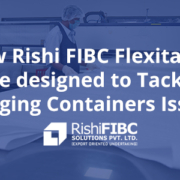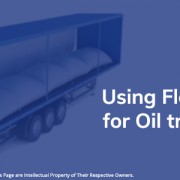Selecting The Right Container For Flexitanks
If you are involved in bulk liquid transportation or storage, it is essential you pay utmost importance to flexitank specifications as well as the container’s specifications and details. The container you select should conform to the standards and criteria set by the industry. This will ensure the flexitank is safely transported to its destination without any hassle, damage, or safety issues.
To be in compliance with regulations and ensure safe carriage, here are the things you should look for when selecting the right container for flexitanks:
Minimum Gross Weight
For bulk liquid transportation, the container should have a minimum gross weight of 30 tons. However, the Container Owners Association stipulates that if a 30-ton gross weight container is unavailable, the cargo mass should not be more than 0.6 of the declared maximum payload of the container.
Corrugation of Side Panels
It is necessary to know that when you are looking into flexitank specifications, you also need to check the container’s decal panels carefully. The panels should be corrugated along their entire length to ensure safe and secure transportation of the cargo. Do not opt for a container with flat decal panels.
Door Locking Mechanism
The container should have door locking cams that should adhere to the requirements of ISO 1496. The cams should lock not just into the top locking bar retainers, but also into the lower ones. It is necessary that the door handle catch should close completely and the handle fits into the handle retainers in a seamless manner.
In addition, the door should be without dents, and the hinges connecting the door to the frame should not be damaged; they should be in proper working order.
Floor of the Container
There are very strict rules about the floor of the container. If the following are found, you can be certain that your flexitank will not reach its intended destination.
- Groove that is more than 15mm deep
- Groove that is 6mm deep and more than 150mm in width
- Anything adversely affecting the strength of the floor, like delamination
- Height difference between adjacent panels. The difference should not be more than 10mm
- Holes in the floor (nail holes are acceptable)
Side and Front Panel Repair
If the container’s side and front panels have been repaired, ensure the repair complies with the guidelines stipulated by IICL. Do not accept the container if you have any doubt about the quality of repair.
After the container is discharged and empty, it should be returned to the shipping line in the same state that it was provided.
Related: What Makes A Flexitank Better Solution
It goes without saying that choosing a container for flexitank shipment is very important. However, in the bargain don’t neglect your flexitank choice. Rishi FIBC Solutions, a leading flexitank manufacturer in India, offers you international standard flexitanks that are highly robust, stretchable, and absorbent. The tanks have varying capacities of up to 24,000 liters.










